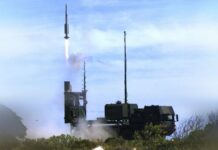Following the 15 August 2025 Alaska meeting between Presidents Vladimir Putin and Donald Trump, and the 18 August meeting in Washington between Presidents Trump and Zelenskyy, along with several European leaders, the prospect of a diplomatically negotiated end to the Russo-Ukrainian War is back on the agenda. Over the course of three and a half years of fighting, the two sides have been down this road several times before, and got nowhere. Is this time any different? Maybe.
While little of substantive detail was initially revealed during the Trump-Putin Alaska meeting, perhaps the most notable takeaway came a couple of days afterward, on 17 August, when US Envoy Steve Witkoff stated that Putin was prepared to concede on security guarantees for Ukraine. According to Witkoff, “We were able to win the following concession: That the United States could offer Article 5-like protection”. Assuming Witkoff’s understanding of the Russian position is accurate, this would indeed represent a major breakthrough. Yet there appear to be two key conditions associated with this, according to a Trump post on Truth Social.
The first is understood to be that Ukraine formally cede Crimea. While likely to prove a painful symbolic issue for Ukraine, the country was highly unlikely to regain the peninsula Russia annexed in 2014, and it is fair to say that this condition largely makes de jure a reality which already existed de facto. Consequently, this is unlikely to represent a hill to die on for Ukraine’s negotiators.
The second condition is understood to be that Ukraine formally promise to give up its NATO accession aspirations. Based on Witkoff’s comment, the thinking may be that in place of NATO membership, Ukraine instead agrees to an “Article 5-like” bilateral security arrangement with the US. This one may be quite difficult for Ukraine to accept, as it would effectively leave their security at the mercy of the US’ leadership. Compared to the real Article 5, an “Article 5-like” bilateral guarantee would be far more prone to abuse of power and rent-seeking behaviour – both of which are a credible risk given the US President’s transactional tendencies. Lest it be forgotten, Trump’s administration effectively coerced Ukraine into agreeing to a minerals deal, by making further support conditional upon Ukraine signing. Under the terms of the deal signed on 30 April 2025, the US is to receive 50% of revenues from new licenses undertaken by extractive industries in Ukraine.
While potential land swaps have also been floated by Witkoff, little hard detail is available at the moment. Without knowing exactly what Russia will concede, the conditions put forward by Trump look to favour Russia’s position, insofar as they largely fulfil Russia’s strategic goal of keeping Ukraine out of NATO, and legitimise at least some of its prior annexations. Should these conditions prove untenable for Ukraine, is there a third way? A brief glance at the alternatives suggests most may be worse, not least because many roads lead back to Trump, in one way or another.
While Ukraine has proven its ability to slow the Russian advance to a crawl, doing so depends entirely on the continued supply of military aid and intelligence support. Right now the US appears to be the only actor capable of meeting the requirements.Trump seems set on adding a peace deal between Russia and Ukraine to his presidential legacy, and has not been shy about pressuring Ukraine very publicly. As such, the idea that Ukraine could wait him out until January 2029, hoping for a friendlier president to enter the White House, seems far-fetched at best. If Ukraine is not seen to play ball by Trump’s rules, he will likely suspend aid again, or take other measures to pressure Ukraine back to the negotiating table. Going more than three years without US support is not an option for Ukraine.
Could Europe stand up to Trump on this issue, and pressure him to commit to unconditional support? Probably not, given that most European leaders have thus far proven quite reluctant to challenge Trump directly, with some even going out of their way to kowtow to him. Hoping that Europe will grow a spine therefore feels like waiting for Godot. Could Europe at least replace US military aid? Europe has certainly improved its military production capacity since 2022, but all evidence suggests it still falls far short of being able to fully shoulder the US’ burden – financial or industrial. Moreover, many key systems operated by Ukraine, such as PATRIOT, would necessarily remain reliant on the US. On top of this, Europe would likely find it difficult to substitute the US’ intelligence sharing, especially in the space domain, where Europe possesses a fraction of the US’ remote sensing capability.
In sum, short of the collapse of the Russian economy and their forces’ unilateral withdrawal, a Trump-negotiated peace process, difficult to stomach as it may be, may represent Ukraine’s only realistic route to securing peace with its sovereignty intact. In the current political environment, it is difficult to see what other viable choice exists.
Mark Cazalet




![[Photo © Office of the President of Ukraine]](https://euro-sd.com/wp-content/uploads/2025/08/Trump-and-Zelenskyy_Office-of-the-President-of-Ukraine-Kopie.jpg)

![Ukraine: Russian forces capture key towns [via Ugolok_Sitha Telegram Channel]](https://euro-sd.com/wp-content/uploads/2025/11/Russian-Motorbike-loaded_via-Ugolok_Sitha-Telegram-Channel-Kopie-218x150.jpg)
![Desolate skies: Why GBAD matters IRIS-T SLM key system components viewed from above, consisting of the command post (left), transporter, erector, launcher (TEL; middle), and radar (right). This system forms the MRAD component of ESSI. [Diehl Defence]](https://euro-sd.com/wp-content/uploads/2025/08/IRIS-T-SLM-system-components_Diehl-Defence-Kopie-218x150.jpg)
![No single solution to the threat: ESD interviews Ahmet Akyol, Aselsan President and CEO Ahmet Akyol, Aselsan’s President and CEO. [Aselsan]](https://euro-sd.com/wp-content/uploads/2025/07/AhmetAkyol_Aselsan-Kopie-2-218x150.jpg)
![A new era of ‘might makes right’ Secretary-General António Guterres speaks to the press at the UN Headquarters, New York [UN;Eskinder Debebe]](https://euro-sd.com/wp-content/uploads/2025/07/Secretary-General-Antonio-Guterres-speaks-to-the-press-at-the-UN-Headquarters-New-York_UNEskinder-Debebe-Kopie-218x150.jpg)
![Beyond the drone line: Lessons from the drone war in Ukraine A typical RF controlled FPV drone, shown during take-off. These little platforms have already reshaped the battlefield significantly, but in many ways have not yet reached their full potential. [Armyinform]](https://euro-sd.com/wp-content/uploads/2025/06/RF-FPV-Drone-Takeoff_Armyinform-Kopie2-218x150.jpg)



